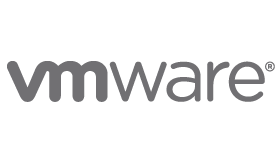

Virtualisation giant VMware has bolstered its virtual desktop offerings with the acquisition of Wanova.
Details of the transaction were not released by VMware.
Privately held Wanova provides a turnkey desktop cloud package called Mirage that is akin to a virtual desktop implementation on steroids. Mirage features an intelligently designed, wide-area-network (WAN)-based architecture, simplification of management of desktop images across different PCs, and desktop continuity for distributed and mobile devices.
Wanova adds these VDI capabilities while enabling users to maintain the native performance of a PC. Performance of multiple PCs over an entire system has always been the No. 1 challenge for VDI makers.
“This was the reason for the deal,” Phil Montgomery, Senior Director of Producting Marketing at VMware, told eWEEK. “Their IP was like no one else’s. The combination of Mirage and View will redefine the whole VDI market.
“The key is in Wanova’s first three letters: WAN. They have wide-area network expertise that drives everything fast from the server to the end point.”
By adding Wanova’s IP to its mix, VMware claims that IT organisations will be able to automatically synchronise PC image updates/upgrades to all types of endpoints – physical virtual, tethered desktops, or roaming laptops (Mac and PC). This will be music to the ears of IT administrators.
Wanova also brings advanced layering technology to enable the deployment of persistent departmental and/or user installed applications in centrally managed desktop images, providing every end user with a low-cost personalised physical or virtual desktop, Montgomery said.
Mirage has image-syncing ability that stores all elements of a user’s desktop image in a company’s private cloud for complete management and backup, Montgomery said. It also has desktop streaming and layering to enable quick recovery and repair services for all types of endpoints – even over WAN.
Wanova originally came out with a hybrid desktop-virtualisation platform in 2010 and added enterprise-level features a year later.
Mirage 2.0 aims to combine the management and security benefits of a VDI (Virtual Desktop Infrastructure) – where most of the components of the platform runs on a central back-end server – and the flexibility needed to enable mobile and remote workers to access the environment, even offline.
Are you a virtualisation guru? Try our cloud quiz!
New chapter for famous name from Internet's early days, Napster, has been acquired and will…
Solving not-spots? Ofcom proposal to make UK the first European country to allow ordinary smartphones…
Pioneering robotaxi service from Alphabet's Waymo to go live in Washington DC next year, as…
Dozens of Chinese firms added to US export blacklist, in order to hamper Beijing's AI…
Chinese rival BYD overtakes global revenues of Elon Musk's Tesla, as record number of Tesla…
Messaging app Signal in the headlines after a journalist was invited to a top secret…